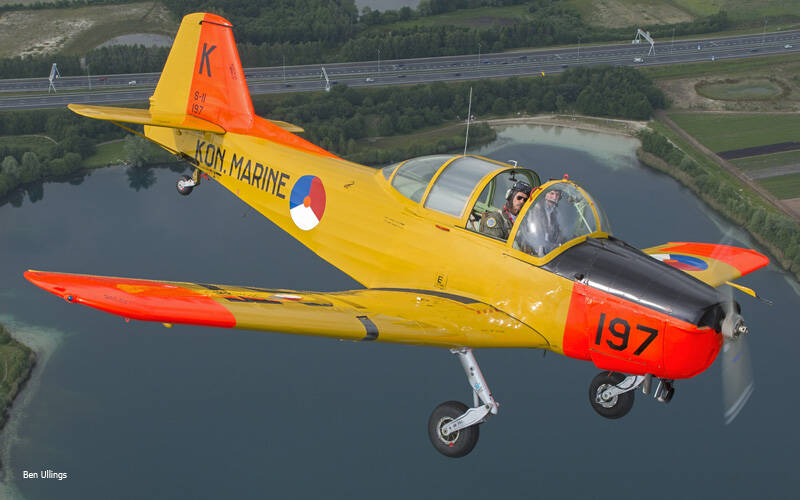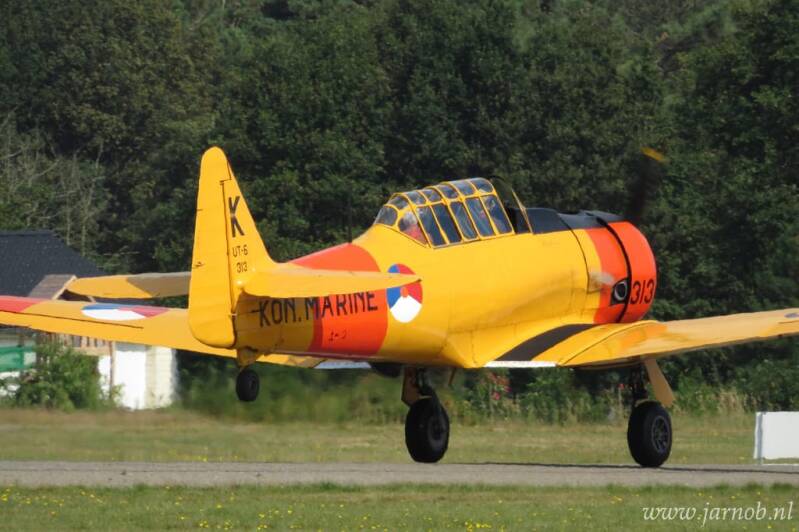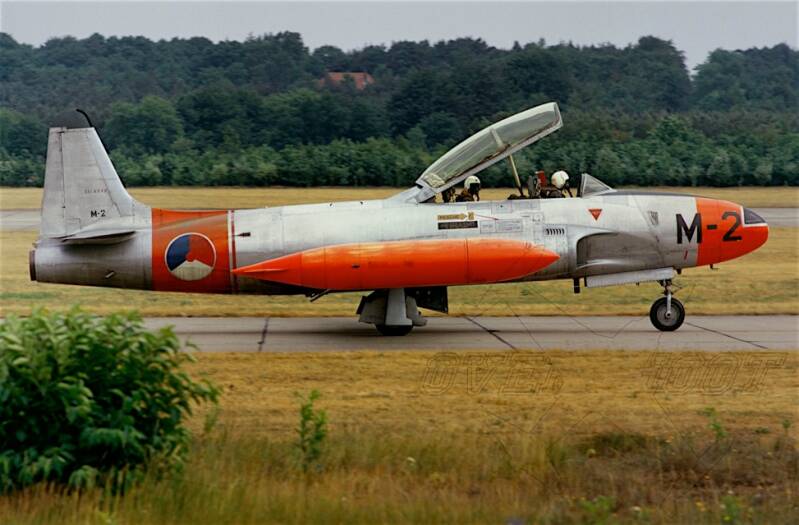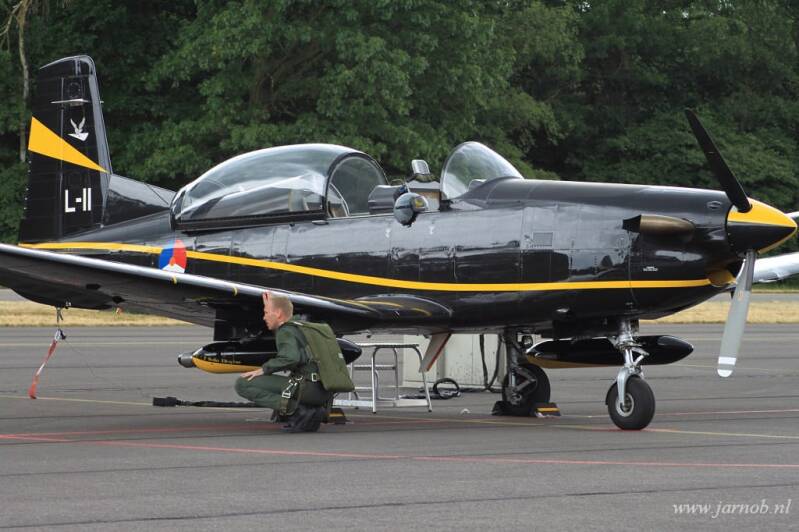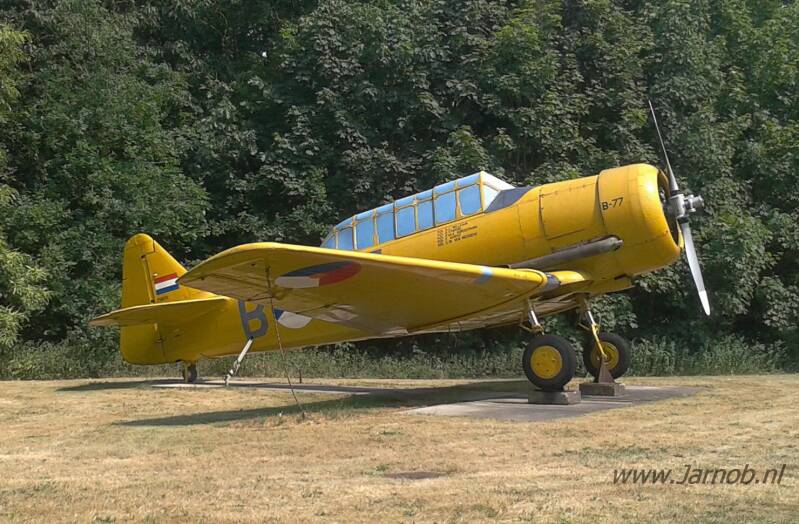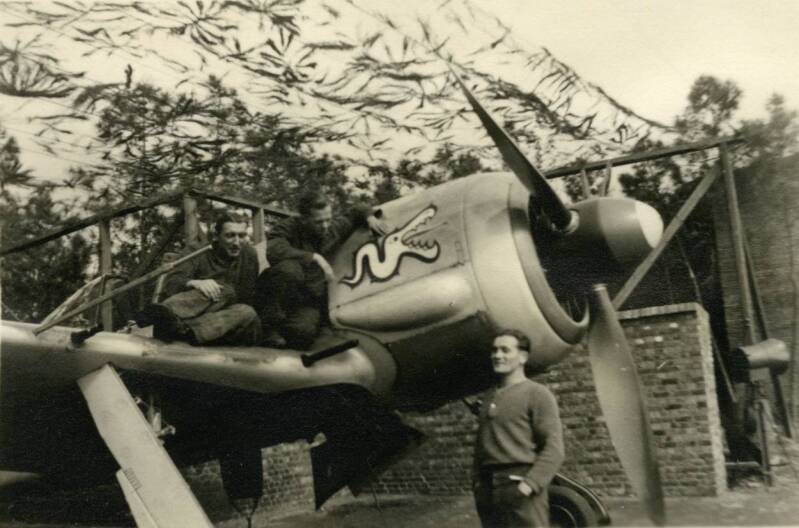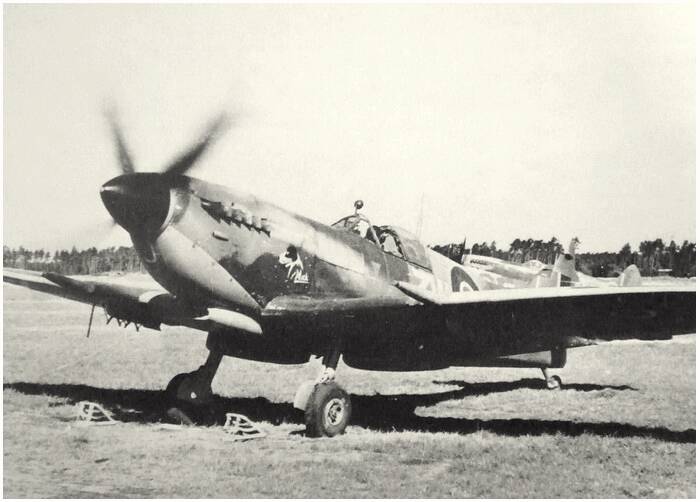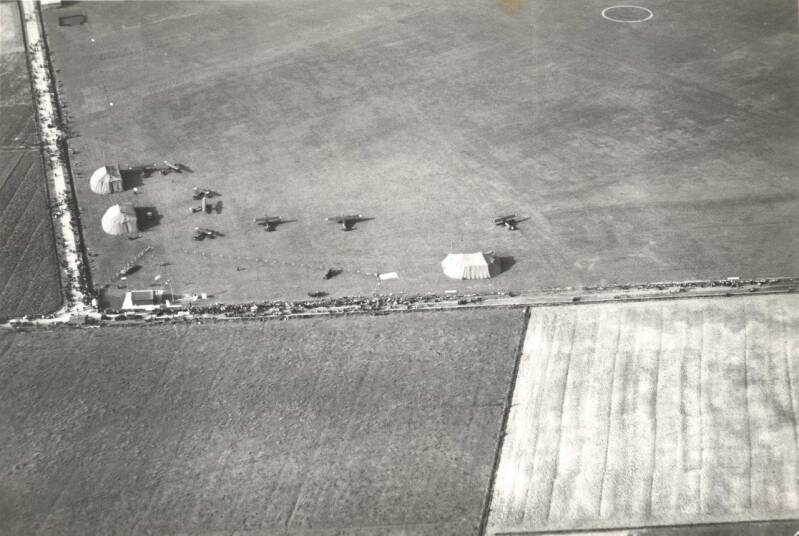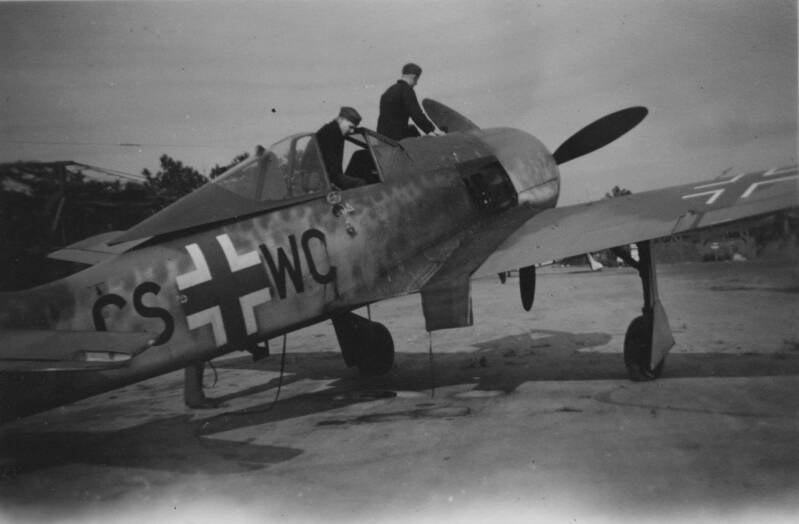Royal Netherlands Air Force (KLu) pilot training history
131 squadron EMVO based at Woensdrecht air base (NL) facilitates the training of new KLu (Dutch Air Force) pilots. The KLu has a rich past of training aircraft. Following the second world war its main basic trainer was the well-known Tiger Moth. After the Tiger Moth the trainees went on to another famous aircraft: the Harvard, for the Advanced Pilot Training. About 56 Tiger Moths and 200 Harvards served with the KLu: the Tiger Moths operating from Woensdrecht airbase and the Harvards from Gilze-Rijen airbase – located in the same region of South-West Brabant.
From 1950 onward 39 Fokker fabricated S-11 Instructors were added to the training program, with the same function as the Tiger Moth namely the Elementary Pilot Training. In 1953 the T-33 Shooting Star (T-Bird) joined the Transition Pilot Training program on Woensdrecht airbase for pilot conversion to jet aircraft. Just a couple of years later Fokker designed the S14 Machtrainer which was used until 1967 from several airbases including Woensdrecht airbase.
In 1967 when the S14 Machtrainer was withdrawn from use the Woensdrecht based S-11’s were transferred to Gilze-Rijen and the Harvards were discarded. This left the T-33 and S-11 as the only training aircraft of the KLu until 1973 when both were taken out of service.
Training of KLu aircrew was shifted to other NATO partners and the USA, where most were trained. This changed in 1989 when the KLu procured 10 Pilatus PC7 turbo trainers – later another 3 were added to answer the need for extra capacity when the Dutch Navy pilot training was also transferred. Studies proved that the PC7’s used for Elementary Training influenced the Advanced training in the USA positively: pilots failing the USA program were brought down to almost 0 per class.
In the 80's/ 90's early 00's the KLu PC7's had an authentic KLu trainer yellow cs - before being repainted to the black/ yellow cs.
Some small heritage links to the past can be found on the airbase, like the wfu Harvard and a Tiger Moth model in the 131sq G&O crewroom!
Aircraft types used for KLu training:
| de Havilland DH-82A Tiger Moth | 1946-1960 | 56 | Elementary | EVO Woensdrecht – 1967 to Gilze-Rijen |
| North American T-6 Texan [39] | 1946-1968 | 200 | Advanced | VVO Gilze-Rijen |
| Fokker S-11 Instructor | 1950-1973 | 39 | Elementary | EVO Woensdrecht – 1967 to Gilze-Rijen |
| Lockheed T-33 Shooting Star [40] | 1953-1972 | 63 | Transition | TVO Woensdrecht – 1969 to Soesterberg; 306sq, 313sq, 700sq |
| Fokker S.14 Machtrainer | 1955-1967 | 20 | Advanced | VVO Woensdrecht/ Twenthe/ Soesterberg/ Ypenburg |
| Pilatus PC-7 | 1989-now | 13 | Elementary | EMVO Woensdrecht; 131sq |
Woensdrecht airbase
As can be seen in the former chapter the KLu pilot training programs were mainly concentrated on Woensdrecht airbase. Woensdrecht airbase currently has one main runway – during earlier years one of the taxitracks was used as parallel runway. It has in the Southeast and Northeast a track-loop with large hangars and revetments. Today only the Northeast loop is used by the 131sq EMVO. Besides the military squadron Woensdrecht is also used by civilian (Fokker) maintenance and overhaul firms located on the Southwestern part of the airfield. Airbusses (up to A330’s), Boeings and Fokkers are all maintained here.
Another important Air Force unit is the so called LCW; The KLu performs large maintenance and overhauls of F16’s, AH64’s, CH47’s and NH90’s by the LCW. Therefore regular delivery flights take place by these types – as well as regular FCF Test flights. Currently stations are built to overhaul the engines of the Dutch and Italian F35’s.

Woensdrecht airfield was founded in 1934 and used grasstrips only – located to the South of the current airbase. During the world war 2 occupation by Germany the airbase was intensively used by several German squadrons (Geschwader), operating Messerschmit Bf109’s, HS126's and Focke-Wulf FW190’s. In 1944 heavy battles raged around the airbase, and after being recaptured by allied forces a British aircraft wing operated from out of Woensdrecht – the RAF wing also included 2 Norwegian squadrons and the Dutch 322 squadron all flying Spitfires.
To make a long story short: Woensdrecht airbase has a long heritage of historical aircraft not quite known to many people. At the end of this page several information and photo reports of these ww2 based units can be found.
131 EMVO squadron
The 131 Elementaire Militaire Vlieger Opleiding (EMVO) Squadron “MEA DOCTRINA VOLANTES” (By my lessons they learn to fly) is the current PC7 Elementary Pilot training squadron of the KLu. All Dutch pilots learn basic flying with this squadron, before being transferred to Germany or the USA for advanced aircraft/ helicopter training.
The badge of 131sq originated from the former 313sq (with slightly different eagle wings), which flew T33 T-Birds between 1953 and 1959 (Volkel airbase) and later on NF5’s from 1972 until 1988 (Twenthe airbase). From 1988 ,when 313sq switched from NF5's to F16's, the badge was also used by the Falcons for a short period of time before the 313sq transferred to the current Tiger emblem. In 1989 the badge was ‘resurrected’ as 131sq when the Pilatus PC7 was brought into service. In its heritage the badge was already for a short period of time used in 1958/1959 by the T-Birds of 313sq on Woensdrecht airbase.



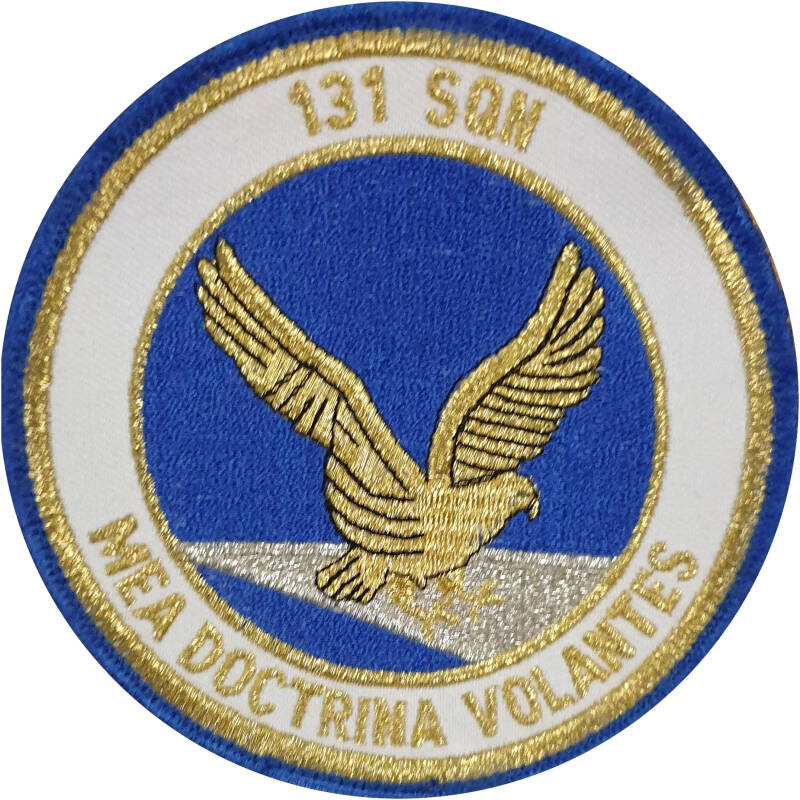
Before the current badge was established the 131 squadron EMVO used another badge for a short period: the badge with the smaller hawk just below the larger. The thought behind this set up was the parent bird protecting its offspring - while actually the parent bird always flies below its offspring for protection. Hence the second badge with the smaller hawk flying above the larger. This was used only temporarily; the badge was transferred to the current KMSL (Koninklijke Militaire School Luchtmacht - Royal Military Air Force School) and the 131 squadron EMVO adopted the old 313 squadron emblem with slightly different (more natural) wing setting. The KMSL is the main wing of all air force training courses - including the 131 squadron EMVO.
During normal operational hours the squadron flies two waves: one wave in the morning and one in the afternoon.
Several callsigns are used by the PC7's:
DIAMOND standard EMVO/VVO or instructor pilot training sortie
RAZOR check flight (course test sortie which needs to be passed by the student)
SNOWMAN solo sortie EMVO student
LUCKY solo sortie VVO student
REBEL formation sortie
STICKMAN FCF (Functional Test Flight)
NAF... (Netherlands Air Force) outbound trip (standard KLu callsign when abroad)
Each EMVO class has its own badge. The name reveals the year the class starts and which sequence it is: EMVO1702 means the EMVO class started in 2017 and was the second one of that specific year. All classes have their own unique badges which have their own story to tell. Click the banner for an overview of the EMVO/VVO Badges:
From the start of the Woensdrecht airfield all the way to the nowadays Woensdrecht KLu airbase several era's passed each with their own based aircraft and specific airbase developments. The first topic gives a good insight into the exact location of the early grass airfield and expansion through time with flightlines, hangars, buildings etc. The other reports each have their own periods following after each other.
Woensdrecht airbase 1946-1950



